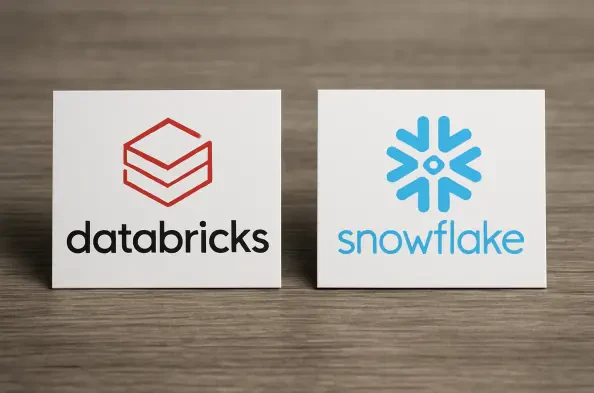Imagine a world where enterprise data isn’t just stored but transformed into actionable intelligence at the click of a button, powering AI-driven decisions that redefine industries. In today’s fast-evolving technological landscape, two platforms stand at the forefront of this revolution: Databricks and Snowflake. These powerhouses are reshaping how organizations harness data for artificial intelligence, addressing the critical need for scalable, user-friendly solutions amid an unprecedented surge in AI adoption. This review delves into their origins, capabilities, and real-world impact, offering a comprehensive comparison to understand their role in driving enterprise innovation.
Core Features and Performance Analysis
Databricks: Powerhouse for Developer-Driven Innovation
Databricks has solidified its position as a leader in data intelligence, particularly for developers seeking robust tools for complex workloads. Its Data Intelligence Platform excels in handling business intelligence, data warehousing, and real-time analytics, providing a seamless environment for processing unstructured data. A standout feature is its support for multimodal workloads, enabling the integration of diverse data types for comprehensive analysis, which is crucial for machine learning model development and deployment.
Beyond raw processing power, Databricks offers an ecosystem tailored to technical users, with intuitive interfaces for building and scaling AI models. Its ability to streamline workflows—from data ingestion to model training—makes it a preferred choice for enterprises aiming to embed AI into their operations. Performance-wise, the platform demonstrates remarkable speed in handling large-scale datasets, often outpacing traditional systems in real-time analytics tasks.
Snowflake: Streamlined Simplicity for Structured Data
Snowflake, in contrast, champions ease of use with its cloud-native architecture designed for structured data analytics. Its self-tuning systems eliminate much of the manual overhead associated with traditional database management, allowing data engineers and scientists to focus on insights rather than infrastructure. This simplicity is paired with robust scalability, ensuring performance remains consistent even as data volumes grow exponentially.
A key strength lies in Snowflake’s data pipeline capabilities and cross-cloud sharing features, which facilitate collaboration across distributed teams and environments. Additionally, its support for AI tool deployment positions it as a versatile solution for organizations looking to integrate predictive analytics. In performance tests, Snowflake often shines in structured query execution, delivering rapid results with minimal configuration.
Market Dynamics and Industry Influence
The data platform industry is undergoing a seismic shift, fueled by the explosive growth of generative AI, which has amplified demand for integrated solutions over the past few years. Both Databricks and Snowflake have adapted by evolving into end-to-end platforms that cover the entire data-to-AI lifecycle, reflecting a broader trend toward unification. This move addresses enterprise needs for streamlined operations, reducing the complexity of managing multiple tools.
Another defining trend is the push for cloud interoperability, with both platforms excelling in their agnostic approach to major providers like AWS, Azure, and Google Cloud. Their commitment to open-source interfaces further enhances flexibility, mitigating risks of vendor lock-in. Meanwhile, emerging concepts like self-service business intelligence are gaining traction, empowering non-technical users to derive insights independently, a development that could redefine user expectations in the coming years.
The competitive landscape adds another layer of complexity, with major cloud providers and niche players vying for market share. This dynamic environment pressures Databricks and Snowflake to continuously innovate, particularly in simplifying user experiences while maintaining cutting-edge AI capabilities. Their ability to stay ahead of these industry shifts will likely determine their long-term dominance.
Practical Applications Across Sectors
In real-world settings, Databricks proves its mettle in industries like finance, where its real-time analytics capabilities enable fraud detection systems to process vast transactional datasets instantaneously. Healthcare organizations also benefit, leveraging the platform to analyze patient data for predictive modeling, thus improving outcomes through personalized treatments. These implementations highlight its strength in handling unstructured data for mission-critical applications.
Snowflake, on the other hand, finds its stride in retail, where its structured data prowess supports inventory optimization and customer behavior analysis at scale. Its cross-cloud sharing features have been instrumental for multinational corporations in synchronizing data across regions, ensuring cohesive decision-making. Such use cases underscore Snowflake’s role as a facilitator of operational efficiency in data-intensive sectors.
The versatility of both platforms is evident in their adoption by diverse enterprises seeking AI-driven transformation. From enhancing supply chain logistics to powering marketing analytics, their impact spans multiple domains, demonstrating adaptability to unique organizational challenges. This widespread applicability cements their relevance in a data-centric business world.
Challenges and Areas for Growth
Despite their strengths, both platforms face significant hurdles in a fiercely competitive market. Major cloud providers pose a constant threat with integrated offerings that bundle data and AI services, often at lower costs. For Databricks, scaling its developer-centric tools to appeal to less technical users remains a persistent challenge, requiring ongoing enhancements to its interface design.
Snowflake, while lauded for simplicity, must contend with the pressure to expand its capabilities beyond structured data to capture broader AI workloads. Technical limitations in integrating cutting-edge innovations like agentic AI also loom large, demanding substantial investment in research and development. Both companies are actively forging partnerships to address these gaps, but the pace of market evolution leaves little room for complacency.
Navigating these obstacles requires a delicate balance of innovation and user focus. Efforts to simplify complex functionalities without sacrificing power are underway, alongside strategic collaborations to bolster ecosystem integration. How effectively these challenges are met will shape their trajectories in an increasingly crowded field.
Final Thoughts and Next Steps
Reflecting on this analysis, the comparison between Databricks and Snowflake reveals distinct strengths that cater to different enterprise needs, with Databricks excelling in developer-driven, unstructured data environments and Snowflake dominating in structured data simplicity. Their performance in real-world applications underscores their transformative potential across industries, even as competitive pressures mount. Looking back, both platforms have demonstrated remarkable adaptability to market demands, setting a high bar for innovation.
Moving forward, enterprises should prioritize aligning platform choice with specific data and AI objectives, considering factors like workload type and user expertise. Exploring pilot projects to test integration with existing systems could provide valuable insights before full-scale adoption. Additionally, staying attuned to advancements in self-service analytics and AI orchestration will be critical, as these areas promise to redefine data platform capabilities in the near term.






